Order Passeriformes Rank Species | Phylum Chordata Superfamily Sylvioidea Higher classification Platostoma | |
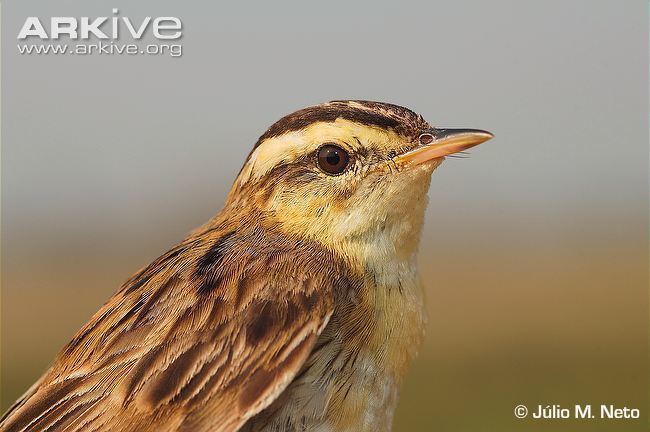 | ||
Similar Garden warbler, Common firecrest, Eastern olivaceous warbler, Booted warbler, Moustached warbler | ||
Microg aquatic warbler
The aquatic warbler (Acrocephalus paludicola) is an Old World warbler in the genus Acrocephalus. It breeds in temperate eastern Europe and western Asia, with an estimated population of 15,000 pairs. It is migratory, wintering in west Africa. After many years of uncertainty, the wintering grounds of much of the European population were finally discovered in Djoudj National Bird Sanctuary, Senegal, with between 5-10,000 birds present at this single site. Its south-westerly migration route means that it is regular on passage as far west as Great Britain and Ireland.
Contents
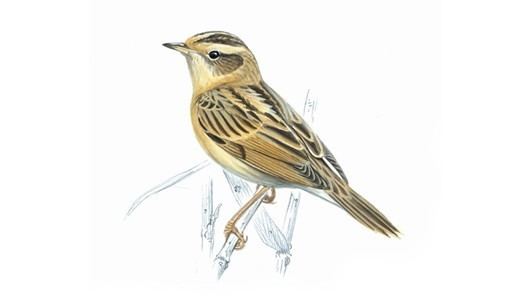
This small passerine bird is a species found in wet sedge beds with vegetation shorter than 30 cm. Drainage has meant that this species has declined, and its stronghold is now the Polesie region of south Belarus, where 70% of the world's population breeds. 3-5 eggs are laid in a nest in low vegetation. This species is highly promiscuous, with most males and females having offspring with multiple partners.
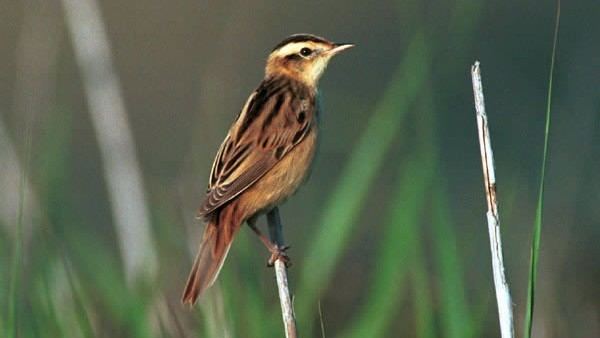
This is a medium-sized warbler. The adult has a heavily streaked brown back and pale underparts with variable streaking. The forehead is flattened, there is a prominent whitish supercilium and crown stripe and the bill is strong and pointed.
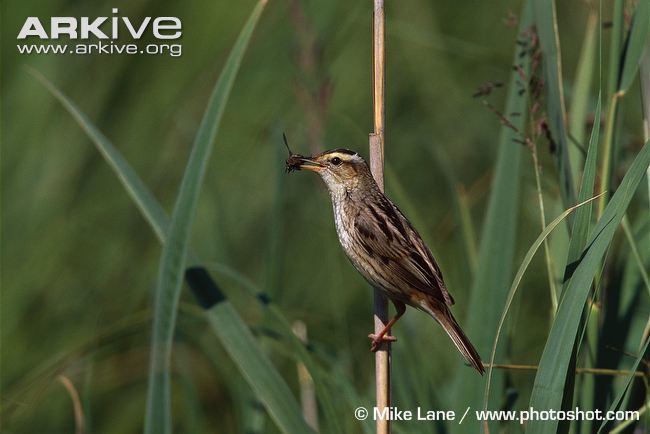
It can be confused with juvenile sedge warbler, which may show a crown stripe, but the marking is stronger in this species, which appears paler and spiky-tailed in flight. The sexes are identical, as with most warblers, but young birds are unstreaked on the breast below. Like most warblers, it is insectivorous, but will take other small food items, including berries.
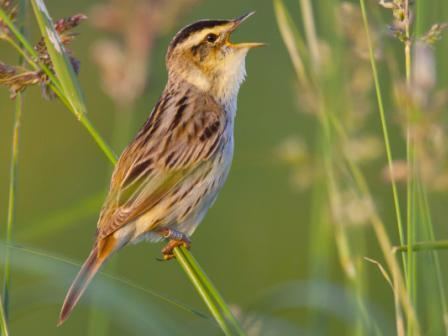
The song is a fast, chattering ja-ja-ja punctuated with typically acrocephaline whistles.
The genus name Acrocephalus is from Ancient Greek akros, "highest", and kephale, "head". It is possible that Naumann and Naumann thought akros meant "sharp-pointed". The specific paludicola is Latin, from paludis, "swamp", and colere, "to inhabit".
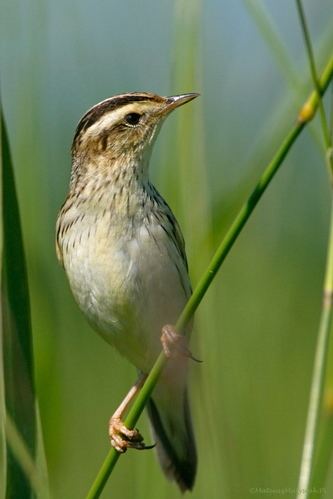
Wodniczka aquatic warbler acrocephalus paludicola
Conservation
The aquatic warbler is the rarest and the only internationally threatened passerine bird found in mainland Europe. Apart from a very small remnant population in Western Siberia, its breeding grounds are completely confined to Europe.
The main threat the species is facing is the loss/degradation of habitat due to draining of wetlands, the decline of traditional, extensive agriculture and overgrowing of the species' habitat with reeds and bushes or trees. Under the auspices of the Convention on Migratory Species of Wild Animals (CMS), also known as the Bonn Convention, the Memorandum of Understanding (MoU) concerning Conservation Measures for the Aquatic Warbler was concluded and came into effect on 30 April 2003. The MoU covers 22 range States (Belarus, Belgium, Bulgaria, France, Germany, Hungary, Latvia, Lithuania, Luxembourg, Mali, Mauritania, Morocco, the Netherlands, Poland, Portugal, Russian Federation, Senegal, Slovakia, Spain, Switzerland, Ukraine and United Kingdom). As of August 2012, 16 range States have signed the MoU. This instrument provides the basis for governments, NGO's and scientists to work together to save the species and their habitat.
Much of the funding for habitat protection for this species has come from the EU's LIFE programme.
